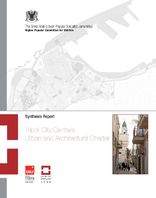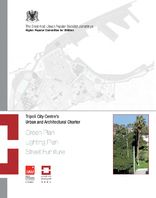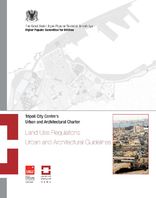Tripoli City Centre’s Urban and Architectural Charter
The study of the “Tripoli City Centre’s Architectural & Urban Charter” has been developed by ECOU with the IAU île-de-France technical assistance. This last report gives a bird’s eye view of our proposed regulation.
The identity of a place is partly given by shapes that are easily memorised and recognised
Tripoli is privileged by its coastal position along the Mediterranean Sea. The city reflects very well by its forms and its heritage the long history of exchanges and cross cultural influences. These influences could be re-interpreted in a contemporary architectural and landscape design. The Old City is organized according to orthogonal streets’ layouts, and in this dense fabric the buildings occupy most of the space (70%). Tripoli has also a set of open spaces which represent a significant potential to increase the city green cover.
Tripoli City Centre is experiencing very strong contradictory pressures
The urban planning is inadequately controlled. Numerous areas remain unbuilt. Some damage come from either irregularities or the urban regulations of the second generation plan. They left room for lands without defined landmarks or new constructions not much in harmony with the surrounding heritage. Tripoli is also characterized by the omnipresence of automobiles as unique mean of transportation. Lighting seems designed mainly to provide light without concern for esthetics or value enhancement of these districts.
A new vision for the future of Tripoli
The architectural and natural heritage of the city centre must be protected and highlighted. Our charter provides with a new land use regulation that will locate its heritage assets and will enable to introduce a monitoring mechanism. It will enhance Tripoli’s identity as a seaside city. The sustainable development of a city cannot be achieved without paying special attention to the environmental issues. As a result, our green plan project foresees the supply of additional green areas in the city, the improvement of public gardens, by raising the city environmental quality standards, by reducing pollution caused by vehicles through the creation of dedicated streets for pedestrian traffic, by encouraging cycling and also by transforming the coastal expressway in an urban avenue. Our proposal includes a sustainable solution to the problem of transport with the establishment of a public transportation system like other cities have done, in order to limit traffic in the city and make the centre more pleasant to live for residents and pedestrians. As a component of our architectural and urban charter of Tripoli city centre, a new range of urban furniture has been proposed together with a lighting master plan, whose aim is to assign a special “ambiance” to each territory.
This study is linked to the following theme :
International


